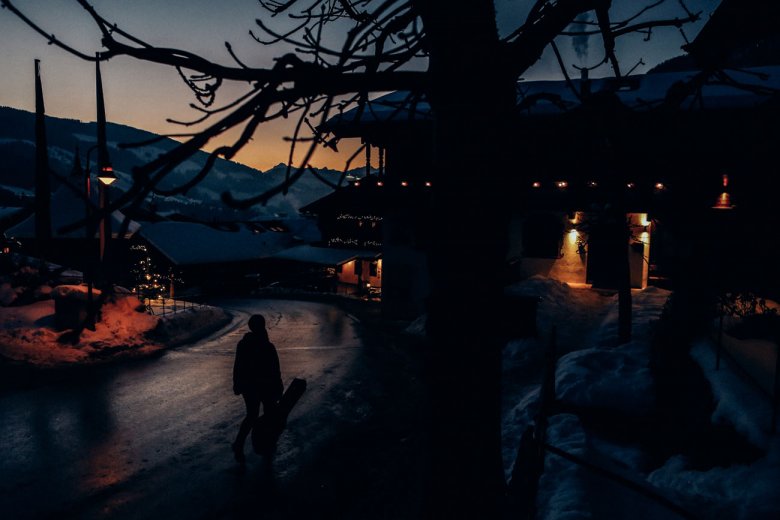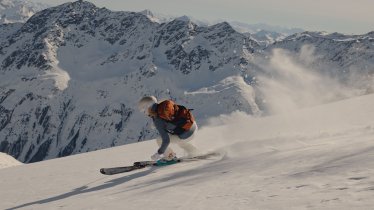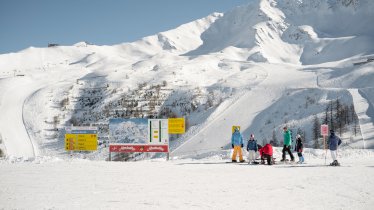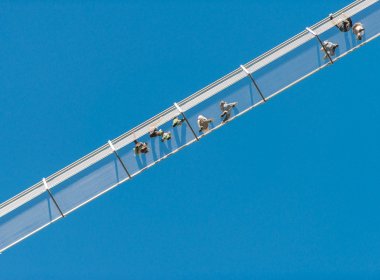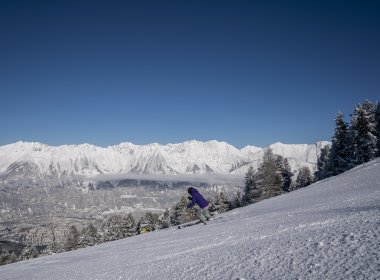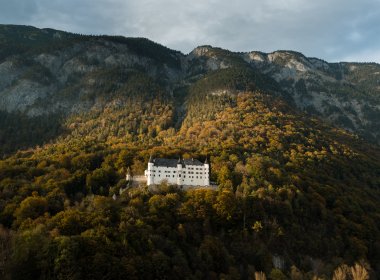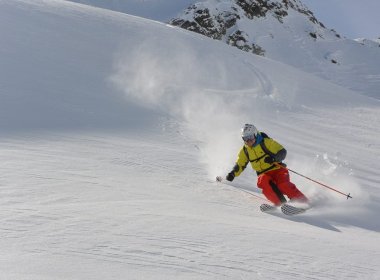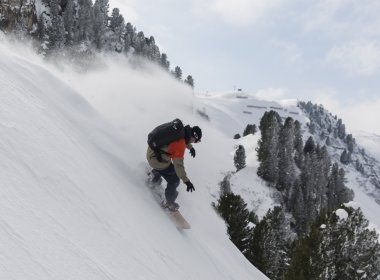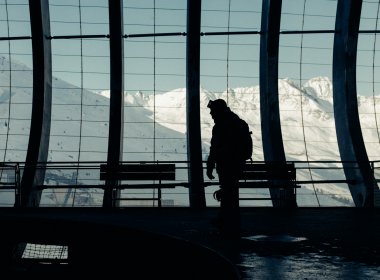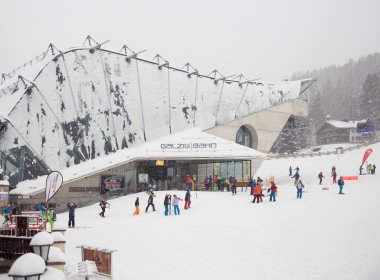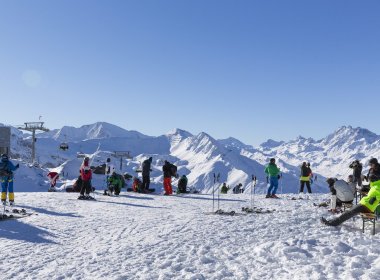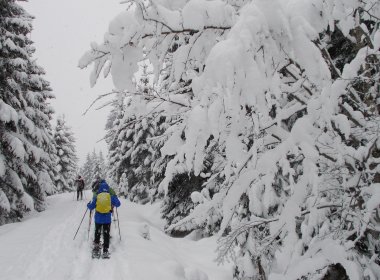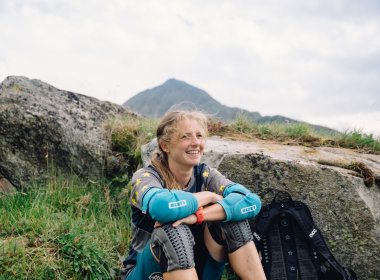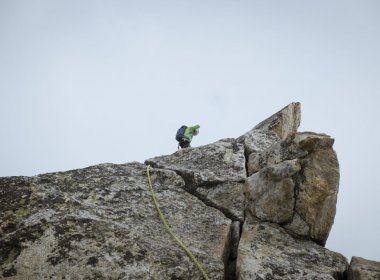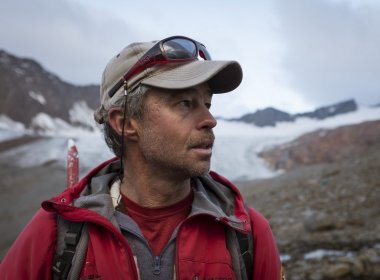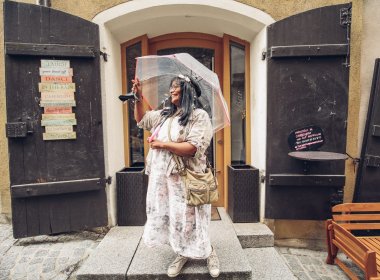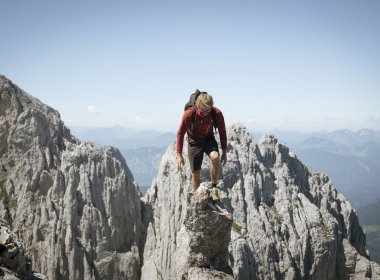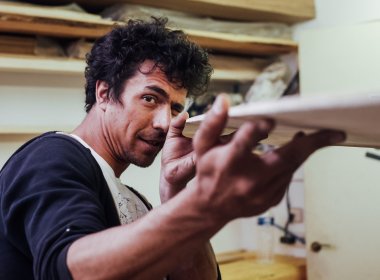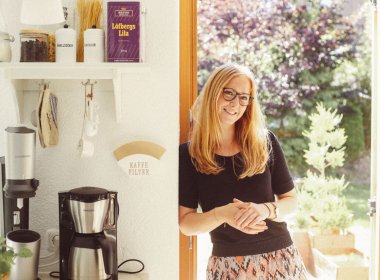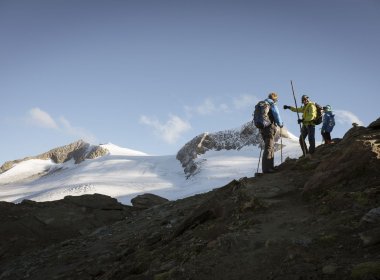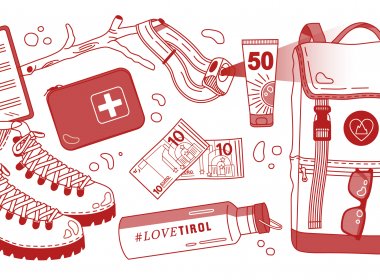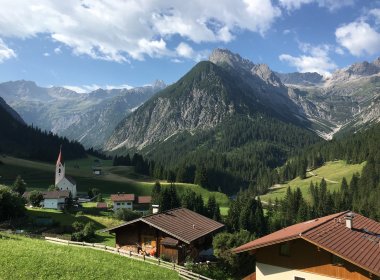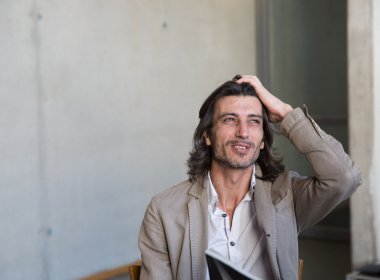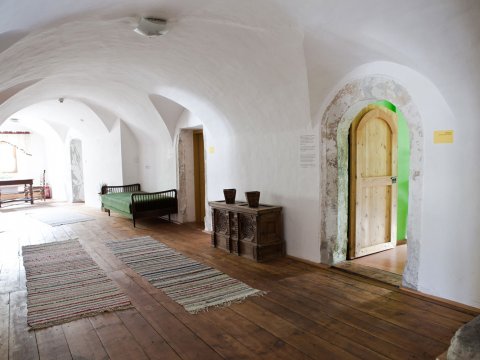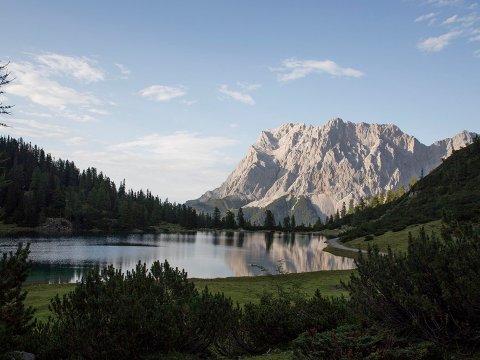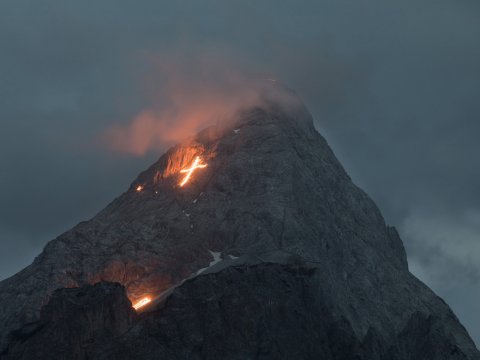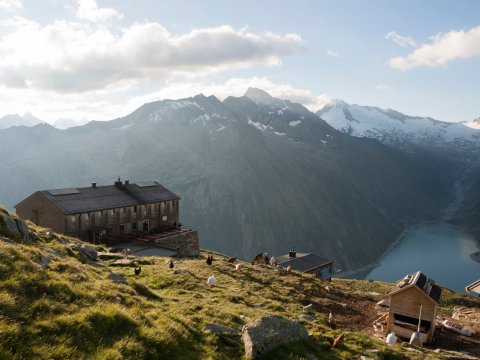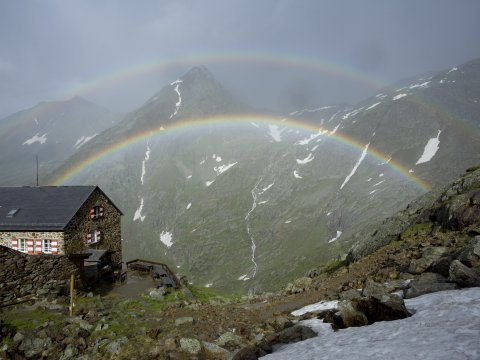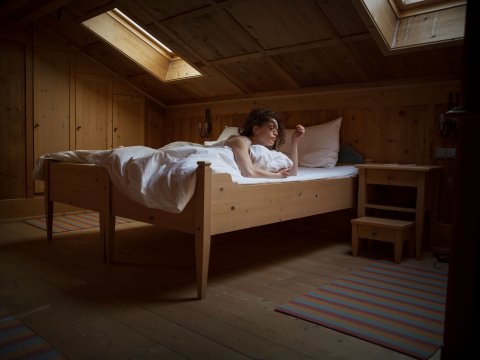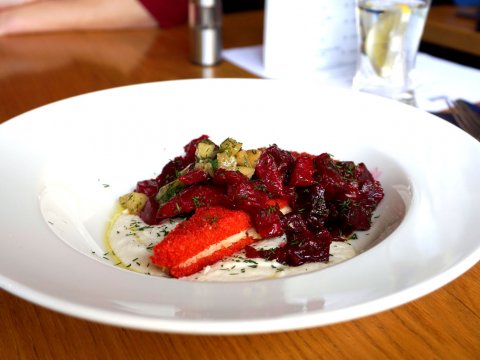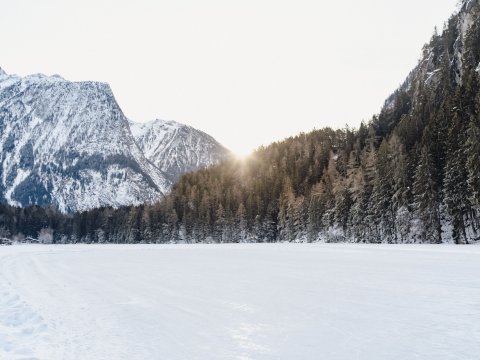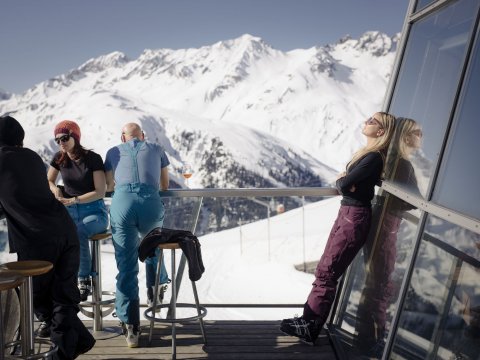Tirol is home to world class skiing and riding at over 80 ski resorts with,…
A Day In The Snow: Skiing in Alpbach
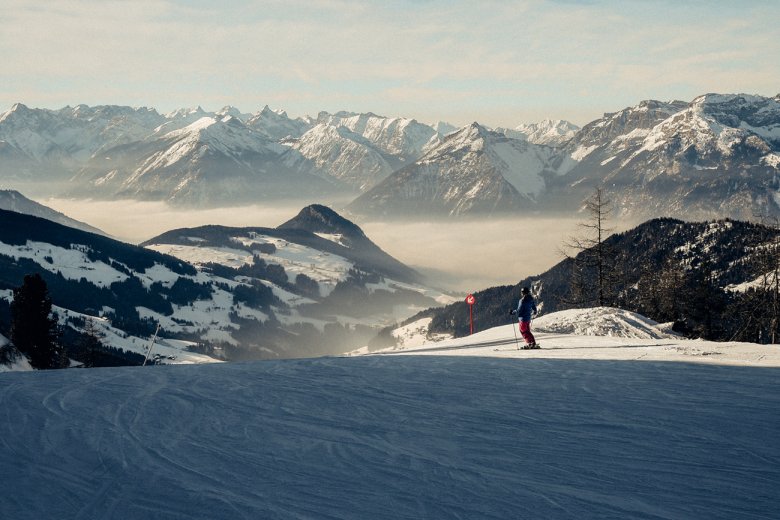
08:30 // Base of Pöglbahn cable car
We want to explore the ski resort of Alpbach from the perspective of those who know it best: locals. This time we meet up with Christina Moser. She is a skier, snowboarder and amateur musician who grew up right here in Alpbach. Our day starts at the bottom station of the Pöglbahn cable car in Inneralpbach. Christina works for the Convention Bureau Tirol, assisting conference delegates from all around the world during their time in Tirol. Her family home is pretty much next to the ski piste. Now what's what I call doorstep skiing!
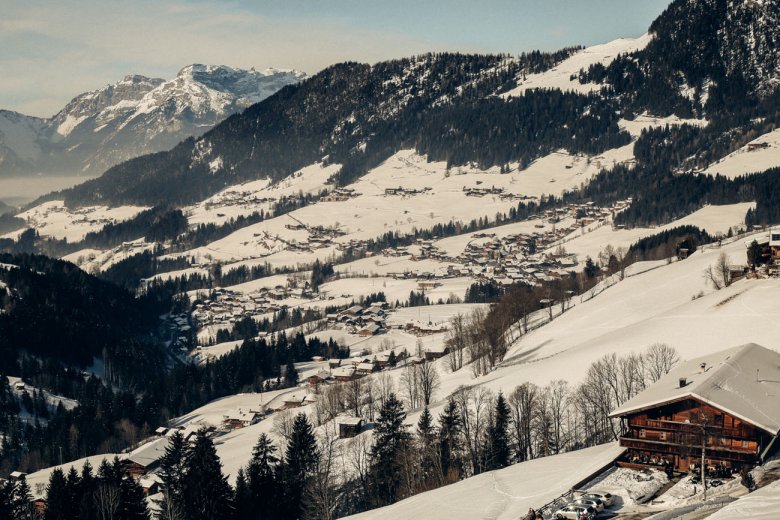
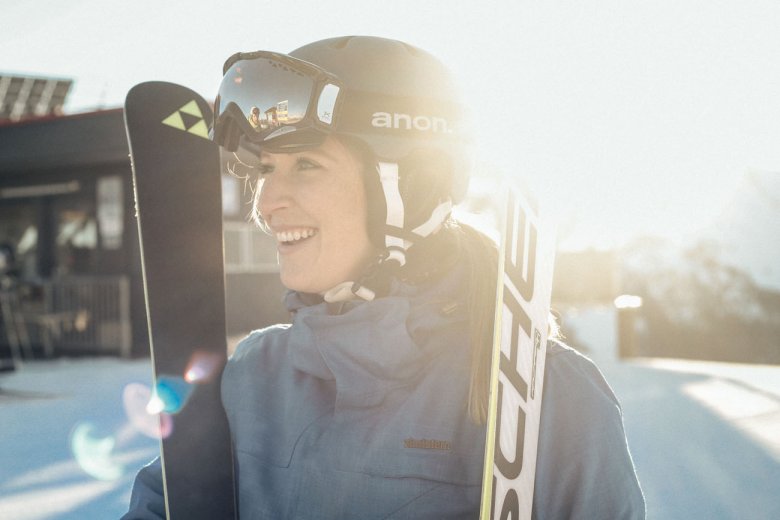
We start the day by hopping on the Pöglbahn cable car and riding up to the top of the Gmahkopf before cruising over to "Piste 2000", as she calls the Hornbahn 2000 chairlift. Since her early childhood, this run perched above Inneralpbach has been her regular warm-up. “I love it because it's generally sunny in the morning and never crowded,” she says. A fast, fun and wide open slope – the perfect way to get the blood pumping and the legs moving. The view into the valley with its rolling alpine pastures grabs our attention. It's easy to see why Alpbach is also popular for ski touring, where experienced winter sports enthusiasts head off the marked slopes into open terrain. My eyes are drawn to the summit of the 2,424-metre Großer Galtenberg, the highest peak in the Alpbach Valley.

10:30 // Visit to the Alpbach Ski School
In between runs, we drop by the Alpbach Ski School where Manfred tells us that it’s “time for elevenses”. What is that supposed to be? As a former ski instructor, Christina knows the answer for sure: It’s having schnapps at about eleven o’clock in the morning, a tradition brought here by British skiers. Normally, ‘elevenses’ refers, as the word suggests, to a short break for light refreshments, usually with tea or coffee, taken at eleven in the morning. The difference is that here in Alpbach the Brits like to swap tea or coffee for a shot of schnapps! Austrians themselves aren't averse to a little liqueur between runs, so we stop for a quick tummy-warmer with Manfred before heading back out into the cold air.
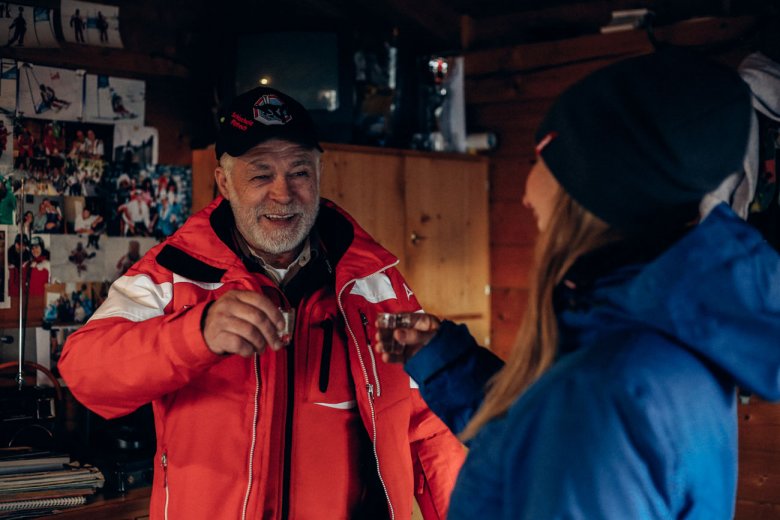
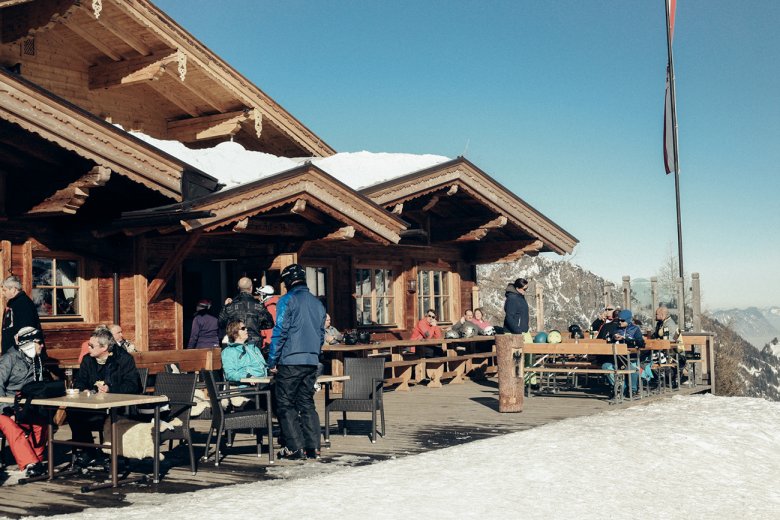
12:00 // Lunch at the Kafner Ast hut
One of Christina's favourite spots for lunch is Kafner Ast, a family-run ski hut that has been completely restored recently and is a popular hangout for locals. Her favourite lunch here is baked mountain cheese with a bowl of 'grey cheese soup' – grey cheese may sound pretty disgusting, but it is in fact a delicacy low in fat and wonderfully tangy in taste. As we tuck in, Christina tells me about the traditional rivalry between the Alpbach Valley and the neighbouring region of Wildschönau. Once fierce, it has mellowed in recent years – maybe in part thanks to the new gondola on the Schatzberg mountain which connected the ski resorts since the 2012-2013 winter season to create the vast resort of Ski Juwel Alpbachtal Wildschönau.
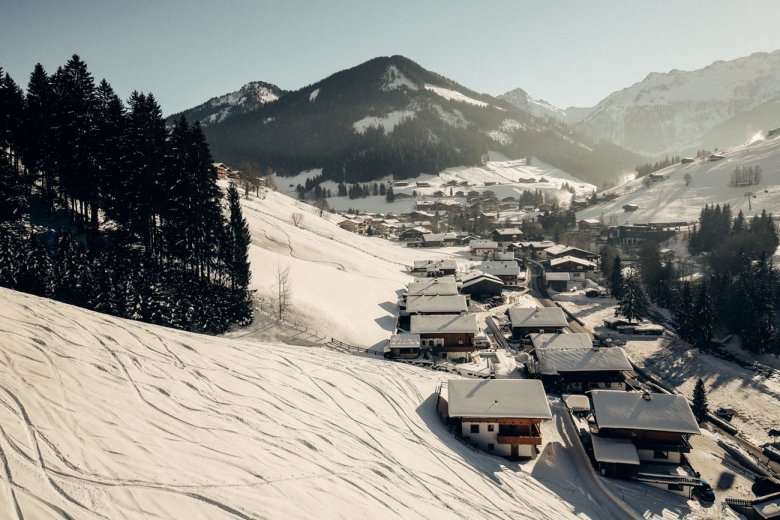
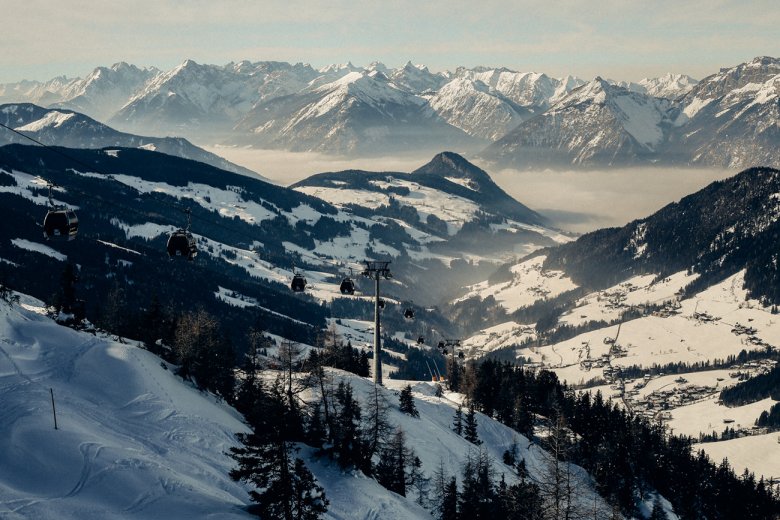
13:30 // Two valleys, one gondola
After lunch we hop onto the aforementioned gondola and ride over to the Schatzberg mountain, enjoying fine views of Inneralpbach along the way. Christina tells me about the Wurmegg-Hütte, famous for its enormous and very tasty Wiener Schnitzel. We've already eaten, so we leave the hut and its culinary treats for another day and head to the top of the mountain for what Christina promises is one of the best views anywhere in the region. There are a few final metres to climb on foot from the top of the cable car to the summit itself, but the panorama doesn't disppoint. Wow! Definitely a great spot for a spectacular photo opp without too much effort.
Just a snowball's throw away I see a quaint log cabin which Christina tells me is the Schatzberg-Hütte. This rustic mountain lodge can be rented and sleeps up to twelve people, with unrivalled slopeside access. A few metres further down the mountain lies Gipföhit, another on-mountain restaurant that makes for a great break from the slopes. We push off again and head down into the valley, enjoying the wonderful views of Alpbach. There are lots of typical chocolate-box chalets, but one building I can't seem to spot is the Congress Centre Alpbach famous for bringing together some of the world's leading politicians and thinkers each year for the European Forum Alpbach. But more on all that later.

15:00 // Expert boot-fitting
We arrive down in the village after an exhilarating descent. Before we head into Alpbach to explore what it has to offer, we head over to the Sportshop Alpbachtal run by Hannes Lintner and located next to the bottom station of the Wiedersberghornbahn cable car. When it comes to skis and boots, there are few people more experienced than Hannes. Together with his team he is responsible for selecting, tuning and maintaining all the equipment used by some of the region's best up-and-coming ski racers. He has even worked as a serviceman at the FIS Alpine World Ski Cup in Sölden, waxing the skis of the world's best. Some people drive all the way from the Inn Valley to get their ski boots fitted by him. Winter visitors to Alpbach in need of skis, snowboards, boots and poles should head over to his shop and check out all the latest equipment available to hire. "Freeriding and ski touring are both booming right now," he tells us, adding that in Reith im Alpbachtal there is a piste which is floodlit every Tuesday evening to enable ski tourers to get in a bit of a post-work work-out by walking up and skiing back down under the stars. Sport Conny's, Christina tells us, is another good ski rental shop in the area.
15:30 // Alpbach's iconic architectural style
We decide to call it a day on the ski slopes and instead enjoy the typically Tirolean architectural style for which Alpbach is famous. This village an hour west of Innsbruck really is the epitome of an idyllic chocolate box resort – a tidy collection of dark-wood chalets with red and green painted shutters. It is striking how all the buildings in the village look so alike. No cooincidence, I find out. Christina tells me that way back in 1953 a bylaw was introduced imposing strict rules limiting the size and measurements of buildings (including windows, balconies and gables) to ensure consistency with the traditional chalet-style exterior for which Alpbach is now famous. Until today, this law requires that every new building has to be constructed in traditional stone-and-wood style – not always to the joy of housebuilders these days. That may be the case, but this uniform style was certainly also a contributing factor in Alpbach winning the title “Most Beautiful Village in Austria”. We definitely agree that it is among the most gorgeous villages in the region.
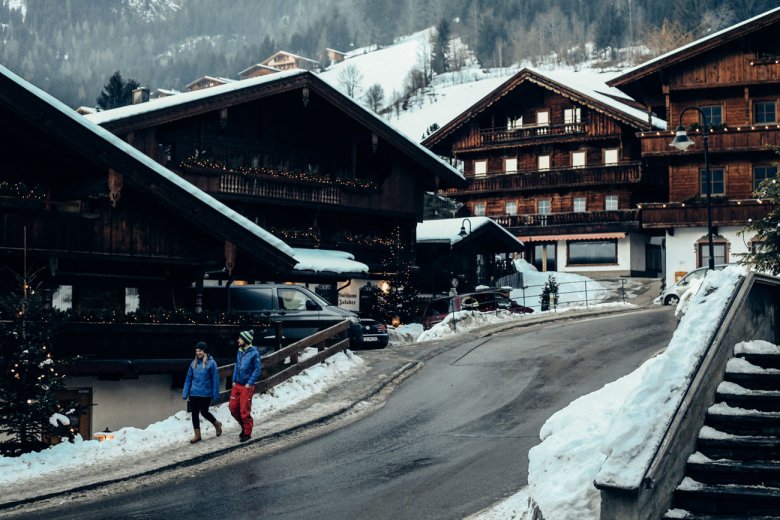
16:00 // "The Village of Thinkers"
One of few buildings in the village that does not completely comply with the local building code's specifications is the Congress Centre Alpbach. It is the venue of the European Forum Alpbach (EFA), an annual meeting of minds. Dating back to 1945, the EFA was the first political and intellectual event to take place in a German-speaking country after the war. Today it is one of the world's leading interdisciplinary platforms for dialogue, bringing together leading politicians, economists, intellectuals and academics each August to promote and discuss ideas for a peaceful and united Europe. This gathering has earned Alpbach the title "Village of Thinkers". Nobel Prize-winning Austrian physicist Erwin Schrödinger liked Alpbach so much that he decided to spend his final years here. Thomas Kahn, who works for the Congress Centre, shows us around the contemporary building and explains that it was extended in 2016. Most of the Congress Centre Alpbach, he tells us, has been built into the mountain and covered with grass and plants so as not to clash with the village’s otherwise traditional style. So that’s why we couldn’t see it when skiing down – most of it is underground!
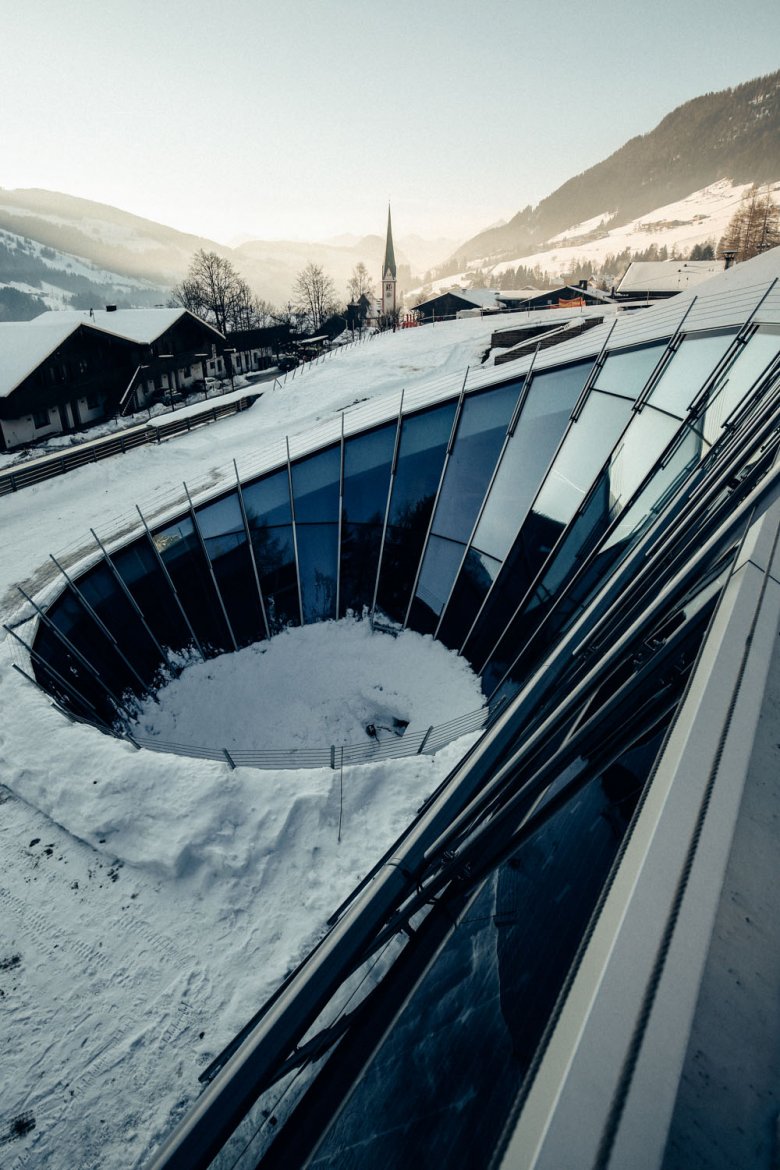
Making our way through the building, our attention is drawn to a spiral-shaped, inverted glass cone at the heart of the complex. It serves as as a source of natural light and also as a symbol of the centre's contemporary design principles. Some of the seminar rooms have clay walls, explains Thomas. “Clay stores moisture and absorbs sound, which makes it perfect for a meeting space. Energy for the heating and cooling are generated by a geothermally operated heat pump and electricity is sourced from the façade with its integrated solar panels.” The 2016 expansion doubled the Congress Centre's capacity. From outside it’s hard to believe that this building can accommodate up to 1,200 people! And when it comes to accommodation, there are no giant hotel complexes to be found. It turns out that almost all the village's residents have a few rooms to rent, spreading the economic benefit of events at the Congress Centre Alpbach among the local people.
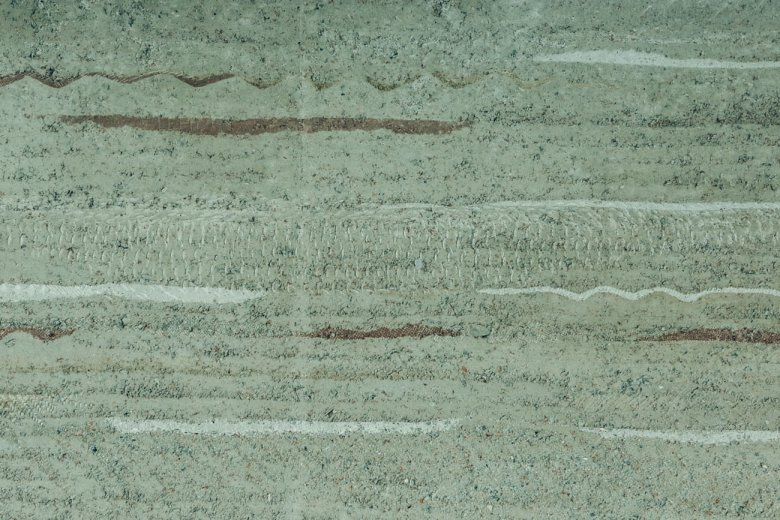
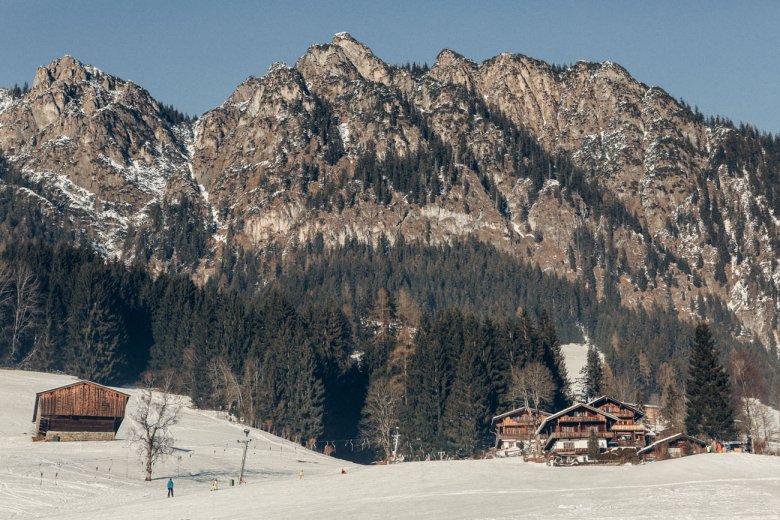
Where to stay & where to eat
Most B&Bs in Alpbach offer the comforts of a hotel, explains Christina. We visit one of them, Haus Sonnwend / Gästehaus Schneider. Gitti, the owner, takes pride in the quality of the food she serves her guests and goes to great lengths to buy local. "I get most of my products from farmers here in the region. Just yesterday I got some amazing dry-cured ham." Many of her foreign guests are surprised to find local butter at the breakfast buffet. "When they try it for the first time, they love it," says Gitti. Many guests are also surprised to learn that that finest drinking water available comes from the tap not the bottle.
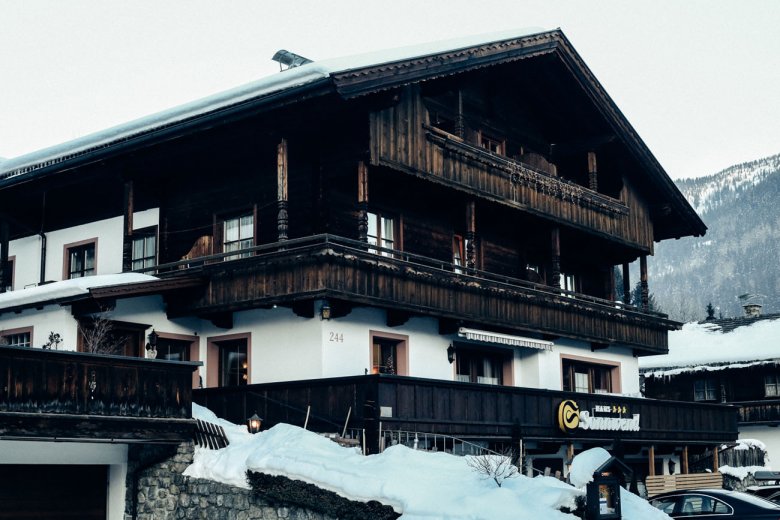
Together with Christina we visit the Böglerhof, a refined, sophisticated four-star superior hotel operated by the Alpbach-based Duftner family. Dating back to the 15th century, it retains many original features which have been lovingly worked into the hotel. These include a room known as the "Fuggerstube" ("Fugger Parlour"). It takes its name from the Fuggers, an historically important German family originally from Augsburg who controlled much of the European economy in the 16th century and used the Böglerhof as an administrative centre and place of jurisdiction during this period. It is the picture postcard epitome of a Tirolean parlour. Despite the fact that the Böglerhof has been modernised and expanded over the years, the owners have always been at pains to maintain the authentic style and atmosphere with ancient timber beams and Madonna paintings on wood-panelled walls.
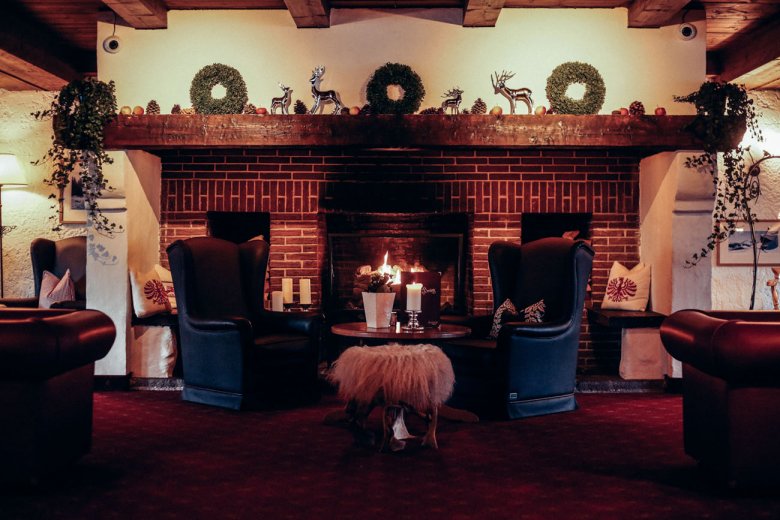
Christina shares a few more secrets with us. Those craving coffee, cakes and the Austrian staple of "Kaiserschmarren" (thick pancakes chopped up into small pieces and served with raisins, icing sugar and apple sauce) are strongly recommended to visit one of the farmhouses in the environs of Alpbach. The Zottahof for example, has probably the best Kaiserschmarren in town, while the Wurmhof serves delicious homemade cakes. When it comes to amazing views, Christina recommends the Gasthof Rossmoos. A favourite hangout among locals is the Café Genuss with its shabby-chic style store right next door where you can shop for lovely decorations.
18:00 // A cosy end to a wonderful day
We draw our day to a close at one of Christina’s favourite restaurants, the Jakober. It houses a pizza restaurant, a cosy Tirolean inn and a pub. The food is always amazing, from “Alpbacher Zerggln” and “Schlipfkrapfen” to “Tiroler Gröstl” – hearty, delicious and typical of the region. On any given night the pub is full of young, mostly English-speaking party animals listening to local live music – Christina performs there regularly with her band, so maybe you’ll be lucky enough to catch a gig next time you're in Alpbach.
